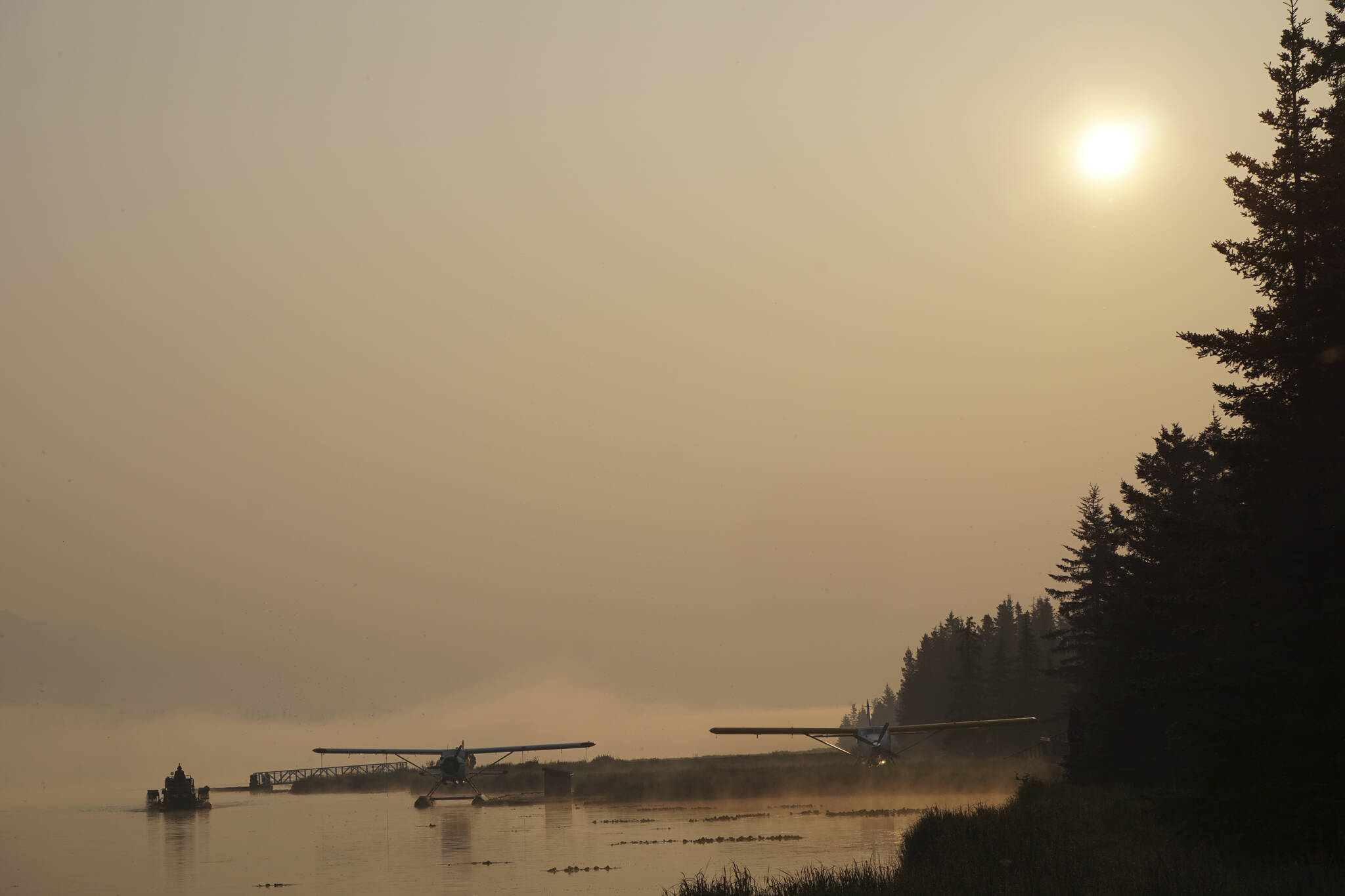An air quality advisory was issued for Southcentral Alaska on Tuesday, triggered by ongoing wildfires in the southwest that have produced increased levels of smoke in the region.
In a report Tuesday, the Alaska Department of Environmental Conservation Division of Air Quality stated that smoke was starting to move over the Alaska Range. The Copper River Valley was expected to see the impacts of smoke, followed by Lake Iliamna, Cook Inlet and the Susitna Valley. The advisory expires Friday at 2 p.m.
On Tuesday and Wednesday, a thick haze fell over Kachemak Bay, with a sharp smell of wildlife smoke in the air. The southern shore of the bay and the Kenai Mountains could barely be seen, if at all at some times.
Mark Smith, an air quality meteorologist for the state’s air monitor air quality division, said the advisory is issued for virtually the whole Southcentral region, even though the eastern and central peninsula may not see as much smoke.
He did say, however, that “Kenai may get lucky.” Forecasters are predicting that the wind patterns will bring smoke over Mount Iliamna, but it will likely hug the west side of the Alaska Range and not affect the Kenai and Soldotna area as much.
The Seward and Prince William Sound areas should also maintain decent air quality, Smith said. Kodiak, Homer and Nikiski might experience less visibility in the coming days, and the Susitna Valley will be especially impacted.
According to the advisory, air quality will vary between good and unhealthy depending on wind patterns and proximity to the fires. Conditions are generally worse overnight and in the early mornings. During the daytime, surface heating carries smoke upward, the advisory states.
Smith said one of the blazes causing a lot of smoke right now is the Koktuli River Fire, which is burning west of Iliamna and 35 miles north of Iguigig.
The Koktuli River Fire, along with the Pike Creek Fire, are some of the “more active” ones raging right now, according to Alaska Wildland Fire Information center. They are affecting more than 184,000 acres combined, and have 10 fire bosses assigned to keep them from impacting structures. The fires were started by lightning.
Crews are dropping water in “strategic locations” to try to control the spread of the flames. As of Tuesday, there were multiple kinds of aircraft assigned to the area to support mitigation efforts.
Smith said the air quality may be unhealthy for sensitive groups in the Susitna Valley, Kodiak and along the western side of the Alaska Range along Cook Inlet until the advisory is lifted. These groups include people with heart or lung disease, elderly people and children.
He said the air quality should improve on Saturday, Sunday and Monday for the holiday weekend.
For more information, visit https://dec.alaska.gov/air. The University of Alaska Fairbanks also has information on wildfire smoke, including an animated map showing smoke forecasts, at smoke.alaska.edu.
Reach reporter Camille Botello at camille.botello@peninsulaclarion.com.


